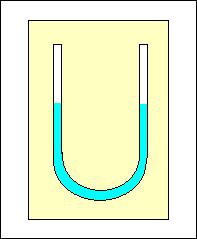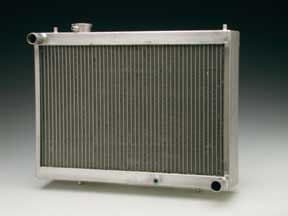<TABLE style="MARGIN-LEFT: 3px" cellSpacing=0 cellPadding=0 width="100%" border=0><TBODY><TR><TD vAlign=top width="50%">
Undertrays, Spoilers & Bonnet Vents, Part 1
Designing, siting, installing and testing!
by Julian Edgar
</TD><TD vAlign=bottom align=right width="50%" rowSpan=2><TABLE style="BORDER-RIGHT: #336699 1px solid; BORDER-TOP: #336699 1px solid; BACKGROUND: #e3ebf3; BORDER-LEFT: #336699 1px solid; WIDTH: 310px; MARGIN-RIGHT: 6px; BORDER-BOTTOM: #336699 1px solid" cellSpacing=0 cellPadding=0 border=0><TBODY><TR><TD style="FONT-SIZE: 11px; WIDTH: 100%; COLOR: #000099"> Advertisement</TD></TR><TR><TD align=middle><SCRIPT language=JavaScript1.1 src="http://campaigns.f2.com.au/js.ng/site=autospeed&cat=techfeatures&adspace=300x250&subcat=&carmake=&carmodel=&area="></SCRIPT><SCRIPT src="http://ads.webpublications.com.au/scripts/wpas.js?site=autospeed&adspace=300x250"></SCRIPT><NOSCRIPT> <AHREF="http://ads.webpublications.com.au/scripts/clickthrough.cgi?site=autospeed&adspace=300x250"><IMGSRC="http://ads.webpublications.com.au/scripts/wpas.js?site=autospeed&adspace=300x250&noscript=1"></NOSCRIPT>

<NOSCRIPT>

</NOSCRIPT></TD></TR><TR><TD style="FONT-SIZE: 11px; WIDTH: 100%; COLOR: #000099; TEXT-ALIGN: right">Advertisement </TD></TR></TBODY></TABLE></TD></TR><TR><TD style="BORDER-RIGHT: #666666 1px solid; BORDER-TOP: #666666 1px solid; BACKGROUND: #f9f9f9; BORDER-LEFT: #666666 1px solid; BORDER-BOTTOM: #666666 1px solid" vAlign=top width="50%">
At a glance...
- <LI style="FONT-SIZE: 11px; MARGIN: 3px 3px 6px 15px; COLOR: #666666">Part 1 of a 3-part series <LI style="FONT-SIZE: 11px; MARGIN: 3px 3px 6px 15px; COLOR: #666666">Engine bay aerodynamic flows <LI style="FONT-SIZE: 11px; MARGIN: 3px 3px 6px 15px; COLOR: #666666">How scoops and vents work <LI style="FONT-SIZE: 11px; MARGIN: 3px 3px 6px 15px; COLOR: #666666">Measuring underbonnet aero
- Using Magnehelic gauges and manometers
</TD></TR></TBODY></TABLE><TABLE style="MARGIN-TOP: 3px" cellSpacing=0 cellPadding=0 width="100%" border=0><TBODY><TR><TD style="PADDING-RIGHT: 5px" align=right width="100%">
 Email a friend
Email a friend  Print article
Print article </TD></TR></TBODY></TABLE>

All modern car designs have spent thousands of hours in the wind tunnel while the engineers refined and altered, tested and assessed. But contrary to popular belief, many of those hours werent used to create a body shape with great drag and lift figures. Instead the engineers were spending the time optimising the cooling system airflows - making sure that plenty of air reached the radiator(s) and could then leave without obstruction.
The average modified car is very different. Perhaps theres a randomly designed bodykit in place and there might also be added bonnet (hood) vents. But theres invariably not a lot of rhyme or reason to it all - sometimes directional vents are put in backwards, while others intended to let air in are almost certainly letting air out. Aftermarket undertrays? Well, while theres plenty of discussion on web groups about them, fitting and then testing their effectiveness is almost unknown.
So is it possible to design, install and test front aero aids that achieve something thats worthwhile? It sure is. In this series we take a detailed look at designing and fitting a front undertray, front spoiler, and bonnet vents. These were aimed at improving the airflow through the front heat exchangers radiator, oil cooler, air con condenser, intercooler and power steering cooler. (In this article well concentrate on intercooler flows, but the others apply just as much.)
The whole exercise proved to be a learning experience in more ways than one - like finding out that at some speeds, the guinea pig cars underbonnet intercooler had in fact, zero outside airflow through it... Surely not? but thats the truth.
But lets start at the beginning.
Pressures
Air will only flow if there is a pressure differential. This is a really important point to grasp air doesnt pass through the radiator just because the car is moving forward. Instead, there needs to be a higher pressure in front of the radiator
and a lower pressure behind it that is, a
difference in pressure.
To better understand this, imagine that the engine bay is sealed off top and bottom. (In most cases it
is sealed off at the top by the bonnet, but there are usually openings around the engine to allow air to flow out under the car - but here well think about a car with a totally sealed engine bay.)

The car with the sealed engine bay moves forward and air initially flows in through the radiator.

However, without any escape route, the engine bay soon fills up with air, until the pressures either side of the radiator become equal. Now, no more air will flow through the radiator.

With the normal openings beneath the engine, some air can flow out. The pressure build-up in the engine bay is therefore reduced, although it may be still higher than ambient.

With extra exit vents in the bonnet preventing any build-up in engine bay pressure, best flow through the radiator is gained. (Of course, you can substitute intercooler or oil cooler for radiator, if in fact their exit flows are also into the engine bay.)
So the airflow through a radiator doesnt depend on the pressure in front of the core; it depends on the pressure
difference across the core. IOTW, the air exit is just as important as the air entrance if the air exits arent big enough (or the airflow doesnt pas through them quickly enough), pressure will build up on the downstream side of the heat exchanger, decreasing the flow thats occurring through it.
In this application, the primary purpose of front spoilers, undertrays and bonnet exit vents is to lower the pressure build-up inside the engine bay, so increasing the pressure differential across the heat exchangers (rad, intercooler, etc).
<TABLE class=breakout><TBODY><TR><TD class=breakoutCell>
Intake Vents?

Bonnet entrance vents eg to an intercooler are located and shaped to build-up a positive pressure on one side of the heat exchanger. For example, this Impreza WRX uses a very large forward-facing scoop to cause increased air pressure on the top surface of the intercooler. If at the same time there is a lower pressure on the other side of the cooler, air flows through it. However, this in turn directs more airflow into the underbonnet space, creating an even greater need for a lot of exit flow capability.
So if youve added a bonnet scoop to pick up air or you have enlarged the standard scoop its quite possible that theres a pressure build-up under the bonnet which is dropping the efficiency of your radiator, intercooler, oil cooler and/or air-conditioning condenser.
Get rid of that pressure build-up and all of the above will work better...
</TD></TR></TBODY></TABLE>
Measuring Instruments
This discussion of pressures rather than flow all sounds very scientific I am sure hes right, but what the hell? However, when I tell you that its very easy to actually
measure these pressures on a moving car so you can see whats really going on, it all becomes a heap more relevant.
There are two instruments that can be used to measure these pressure variations. One is a Magnehelic gauge and the other, a manometer. (You cant use a normal pressure gauge like a turbo boost gauge because the pressures are very small.)

Magnehelic gauges are made by the <?xml:namespace prefix = st1 ns = "urn:schemas-microsoft-com

ffice:smarttags" /><st1:country-region><st1

lace>US</st1

lace></st1:country-region> company, Dwyer. They are designed to measure both positive and negative pressures, and so have two measuring ports. By using both ports simultaneously its easy to measure pressure differentials just what is wanted in this application.
Magnehelic gauges can be bought new from Dwyer, or alternatively, secondhand. eBay is a good way of buying these gauges very cheaply expect to pay about US$15-25 for one. When buying a Magnehelic gauge, select a gauge that measures up to a maximum of about 3 inches of water. (The 3-inch gauge lets you use it in other applications as well see below. If you intend using it purely for aerodynamic work, buy a 0-1 inch gauge like the one shown here.)
<TABLE class=breakout><TBODY><TR><TD class=breakoutCell>
Other Uses?
Magnehelic gauges are extremely useful in car modification. They can be additionally used to measure flow restriction throughout the intake system, including pressure drops across intercoolers and the air filter. For more on these techniques, do an AutoSpeed site search under Magnehelic.
</TD></TR></TBODY></TABLE>

Instead of a Magnehelic gauge you can use a water manometer. A manometer simply consists of a U-shaped clear plastic tube, partly filled with a liquid (usually water with food colouring in it). You can easily make your own by using some plastic hose and a plywood or particle board backing.

Each arm of the manometer is connected to the pressures being measured. The fluid in the manometer then moves in response to this pressure difference the more it moves, the greater the pressure difference. The actual pressure change can be indicated by measuring the difference in height of the two fluid columns. For example, if their levels are vertically 1 inch apart, you are measuring a pressure differential of 1 inch of water.
To make the manometer more sensitive, you can incline it at a fixed angle. If the manometer is angled at 30 degrees from the horizontal, a difference in level of 1 inch (measured along the tubes) becomes an actual inches of water measurement of 0.5 inches. In this way, very small pressure differences can be easily read off, even in a moving car. (Of course, you should use an assistant to read the manometer.)
Note that while I have spoken throughout this series of measurements in inches of water, its usually not worth making the measurements in actual units its a lot easier to just put arbitrary makings on the manometer backing board so you can see relative changes.
The only downside of the home-built manometer is that its orientation must be kept fixed (eg vertically or at a constant angle) and very small pressure differences are hard to measure.
<TABLE class=breakout><TBODY><TR><TD class=breakoutCell>
More on Manometers
- U-shaped manometers are also commercially available. Some use liquids that are less dense than water, so providing an expanded scale that still reads in inches of water.
- Make sure that the pressure differential is never so great that the water all ends up in one arm of the U-tube. If this occurs, you need a taller manometer with more water in it.
- A home-built manometer can be a very sensitive instrument, capable of showing pressure differences of just 0.01 psi. So despite the simplicity of the instrument, dont think for a moment that it is a poor relation.
</TD></TR></TBODY></TABLE>
Making Measurements
The first measurements that you should make are of the pressures under the bonnet. Leaving one arm of the manometer open to the pressure inside the car, connect a tube from the other arm to the underbonnet area. You can temporarily stick the open end of the tube to the underside of the bonnet with masking tape. If you are using a Magnehelic gauge, connect the sensing tube to the high port and leave the other port open.
Then drive the car and watch what happens on the measuring instrument.

On the guinea pig car a Nissan Maxima V6 Turbo with an added bonnet scoop for the side-mount intercooler the underbonnet pressure rise was considerable. For example, at 80 km/h there was no less than 0.4 inches of water pressure build-up in the engine bay. Given that we have previously measured a pressure in the intercooler scoop of 0.4 inches of water at this speed, it looks very much like the air movement through the intercooler (without the intercooler fan working) is zero. That's because the pressure either side of the intercooler core is the same.
Its worth repeating that: first measurements indicate that the Maximas underbonnet intercooler is getting no outside airflow through it when its fan isnt running, even at high road speeds. OUCH!
You can see why all this stuff is pretty damn important to car performance...
Next week: testing, building and

 Email a friend
Email a friend Print article
Print article









